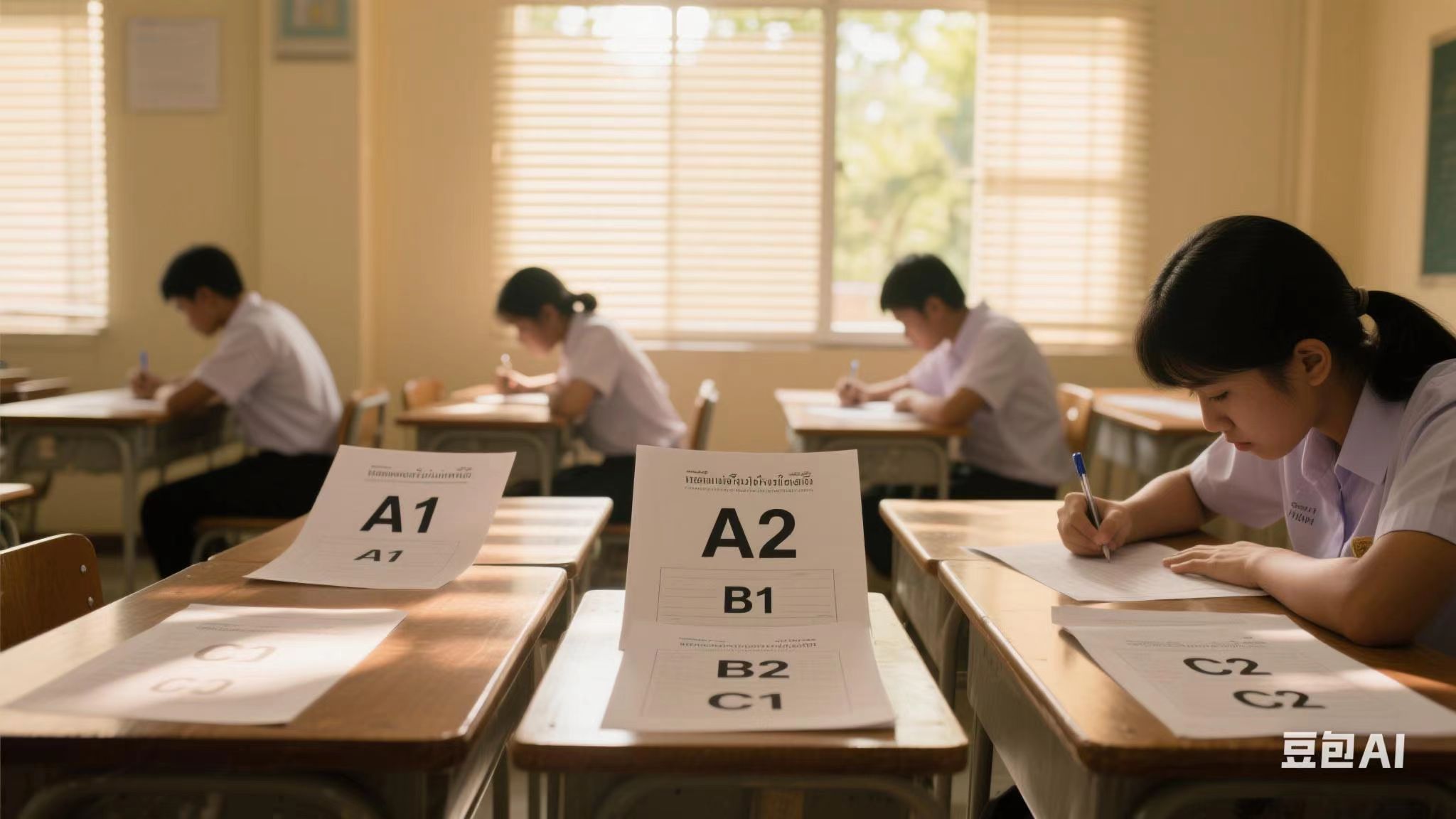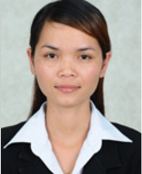
According to the CEFR standard, Thai vocabulary and application scenarios are divided into six levels: A1-C2:
grade | corresponding CEFR | Vocabulary requirements | Ability description |
A1 | beginner | 800-1000 words | Can understand basic greetings (such as สวสดคะ/ครบ), numbers, time, complete shopping (คณชวยหา...ไดไหม), order food and other daily communication. |
A2 | Basic level | 1500-2000 words | Personal information (address, occupation), travel plans (ฉนอยากไปเทยวชมพชด) can be described, simple notifications and advertisements can be understood, and medical treatment and transportation scenarios can be handled. |
B1 | middle rank | 2500-3500 words | Be able to participate in work discussions (report progress, speak at meetings), write emails (สงอเมลถงลกคา), understand news headlines and the main idea of short articles, and express opinions (I think...). |
B2 | middle and high ranking | 4,000-6,000 words | Can handle business negotiations (ขายมอสญญา), academic article reading (วารสารวทยาศาสตร), write reports or essays (เชงรสกหรอเชงเหตผล), and deal with complex social situations. |
C1 | senior | 7,000-9,000 words | Proficient in Thai language (law, medical: กฎหมายสาธารณสข), able to understand film and television dialogue, literary works, and conduct in-depth interviews or academic presentations fluently. |
C2 | Master level | Native language level | They can do literary creation (เขยนจดหมายตวเลามหศจรรย), simultaneous interpretation, capture the implicit meaning of language (อบยคต), and express it naturally and accurately. |
1. A1-A2:
Materials: Daily conversations (market, airport), slow news broadcasts, including polite expressions (use ofคะ/ครบ) and basic quantifiers (ชน,คน).
Question type: multiple choice (matching the relationship between characters), picture matching (such as matching food names with pictures), focusing on capturing keywords (such as prix,วน).
2. B1-B2:
Materials: interview programs (such asวtalk), travel documentaries, business conference clips, involving polite expression (ขออนญาตพดคะ) and cultural customs (ไหวสวสด).
Question type: fill in the blanks (complete the date and place), short answer questions (summarize the key points of the speech), logical reasoning (such as cause and effect: because... so...).
3. C1-C2:
Materials: academic lectures (a clip from a Chulalongkorn University course), political debates, and wordless clips from movies and TV shows (such as "Born Together").
Type: listening overview (summarize the core argument), opinion judgment questions, testing understanding of metaphors (ตวแปล) and cultural references.
1. A1-A2:
Form: human-computer dialogue, reading words (such asสม, รถ), short sentences (ฉนชอพชร), and answering fixed questions (คณอาศยอยทไหนคะ).
Key points: accuracy of the five tones (such as the distinction between come [maː] and come [maː]), use of polite endings (qan for women, kub for men).
2. B1-B2:
Form: video recording or real-time dialogue, describing picture scenes (such as พกผอนทชายหาด), participating in role-playing (simulating hotel booking: ขอจองหองสINGLEคะ).
Score: fluency (avoiding long pauses), grammatical complexity (using connecting words such as and, but, เพราะฉะนน).
3. C1-C2:
Format: In-depth discussion with the examiner (e.g., the impact of Thai food culture on health), impromptu speech (. topic: ความสำคญของการศกษาไทย).
Evaluation: logical coherence (using conjunctions such as first, ในขณะเดยวกน), naturalness of intonation (such as speaking rate, accent position).
Technical assistance: Thai speech recognition technology such as AIS Voice Lab is used to detect the accuracy of tone and swallowing problems (such asวาร becomingวะ).
1. A1-A2:
Materials: illustrated children's stories (such as กรากทรกความเปนสตวปา), product labels, traffic signs.
Question type: multiple choice (judging the protagonist's emotion), paragraph matching (matching sentences with pictures).
2. B1-B2:
Materials: newspaper social page (such as ขาวสดปญหา), travel blog, instructions (steps to use the APP).
Type: main idea question (select the paragraph meaning), detail question (find specific data: ราคาเทาไร), to test the understanding of complex sentences (multiple modifiers).
3. C1-C2:
Materials: abstract of academic papers (such as ศกษາກระบวนการยอยสลายของพช), literary excerpts (สนทรasil works), policy documents (กฎหมายสาธารณสข).
Question type: critical questions (whether the author's point of view is reasonable), article summary writing, testing the mastery of professional terms (enzyme, gene: เอนไซม, jnuomn).
1. A1-A2:
Task: copy words, write short sentences according to pictures (such as สตวเลยงในรปคอหมา), and use punctuation marks (.,!?) and spaces correctly (there is no space between Thai words, but there should be space between numbers and English).
2. B1-B2:
Task: Write a diary (วนหยดของฉน) and a complaint letter (แจงปญหาเครองจกร). The structure should be clear (greeting at the beginning + body + blessing at the end), and use connecting words.
3. C1-C2:
Task: Argumentative essay (support or oppose the existence of zoos: คณคดวาหอสตวเลยงควรปดทำไม), academic report (compare Chinese and Thai festival culture), data should be cited (such as according to the National Bureau of Statistics...) and examples.
Independent modules:
Key points of the inspection:
i. A1-A2: quantifiers (such asชวโมง, person), modal particles (kons, dengn, lanw), basic sentence patterns (subject-verb-object structure: ฉนกนขาว).
ii. B1-B2: passive voice (to + verb), causative verb (to give + verb), complex clauses (using to, zong as guide).
iii. C1-C2: Idioms and colloquialisms (e.g. วาเปนสงเลกแตสำคญ), professional terms (law: ความผดผตองรบความผด).
Question type: multiple choice (choose the correct quantifier), sentence transformation (active to passive), vocabulary filling (select synonyms according to context).
1. Listening/reading/vocabulary:
Online computer-based testing supports Thai Unicode characters (such as using the TH Sarabun New font) and left-aligned interface (Thai is written from left to right).
Technical implementation: Refer to the character compatibility scheme of TCDC Thai corpus to ensure that special symbols (such as ฿, ๑-๙ numbers) are displayed correctly.
2. Oral test:
Real-time video call (the examiner is a Thai native speaker) or AI assessment (such as Deep Learning Thai oral model), support Bangkok dialect and northern dialect (such as Lam Pang accent) recognition.
module | Rating dimensions | Technical assistance |
hearing | Keyword capture (accuracy> 80%), detail understanding (such as time and location error <10%) | Automatically mark keyword matching |
colloquial language | Pronunciation accuracy (five tones correct rate> 90%), polite language use, fluency (pausing <2 times/min) | Speech recognition detects tone deviation |
read | Main idea understanding (deviation from the original text ≤15%), accuracy of detail questions, critical thinking (reasonableness of opinions) | NLP algorithm analyzes and answers logic |
writing | Grammar error (no more than 3 places /100 words), vocabulary richness (synonym replacement no more than 2 times), structural integrity | Thai grammar checking tools (such as Grammarly Thailand) |
total points | If the score of a single item is 50 or above and the average score is 60 or above, you are allowed to take a make-up exam (only once, valid within one year) | The system automatically calculates the weighted average score |
1. Regular exams: All levels of exams are held in March, June, September and December every year. B1-C2 levels need to be booked one month in advance (because of the human examiner involved).
2. Enrollment and examination: A1-A2 level can be enrolled at any time, and AI will arrange the examination within 48 hours. It is suitable for people with fragmented learning.
1. Official cooperation: In cooperation with the Ministry of Education of Thailand (-Ministry of Education) and **TISI (Thai Standards Institute)**, the certificate complies with the Thai Language as a Second Language Competency Standard (TIS 6002-2563).
2. International recognition: The transcript is marked with CEFR level and can be used to apply for admission to Thai universities (such as the language requirements of Chulalongkorn University) or business visa bonus points.
1. Anti-cheating:
The camera captures facial expressions in real time (to detect cheating) and AI analyzes eye movements (to determine whether to consult materials).
2. Input support:
Thai virtual keyboard (layout such as к-จ-ร-พ), support for shortcut key switch (Ctrl+Shift+T), compatible with Windows/Android/iOS system.
1. Official Textbooks:
Basic Thai (Foreign Language Teaching and Research Press): Focus on grammar and vocabulary, including audio resources.
Thai Listening and Speaking Tutorial (published by Bangkok University): Contains real scene dialogues (such as night markets, hospitals).
2. Online tools:
ThaiPod101: Tiered courses, including oral reading and listening training.
TED-Ed Thai channel: suitable for B2-C2 level to expand professional vocabulary.
3. mock examination:
Provides Thai National Immigration Office Thai language test questions (sample A2 level for visa application) and **UTCP (University of Bangkok Thai Language Proficiency Test)** simulation questions.
1. Accent coverage:
The listening material contains standard Thai (Bangkok) and common words in Isan (osan) in the northeast (such as will = full), but writing is limited to standard Thai spelling.
2. Cultural adaptation:
Avoid sensitive topics (such as religion and royal family) and focus on neutral topics such as tourism, education and science and technology. Refer to the public information of the Tourism Authority of Thailand (TAT).
This program combines the characteristics of Thai language (tones, politeness system) and practical application scenarios (tourism, business), which not only meets international standards but also meets the needs of Thailand. It can help learners systematically improve their Thai language skills, and at the same time provide a standardized and technology-driven evaluation system for the platform.

Cool Mango focuses on the online language teaching and learning with all foreign teachers for multiple languages. It aims to popularize online language teaching and learning globally, recruit and train professional teachers worldwide, and create the unique Cool Mango teaching method. It builds an efficient language learning mode and environment with real teaching by native foreign teachers and real-time translation assistance of AI, providing high-quality online language courses and online communication platform for everyone.
 |
  |
  |
Copyright © Cool Mango Co. Ltd. All Rights Reserved. / Privacy Statement / User-agreement











